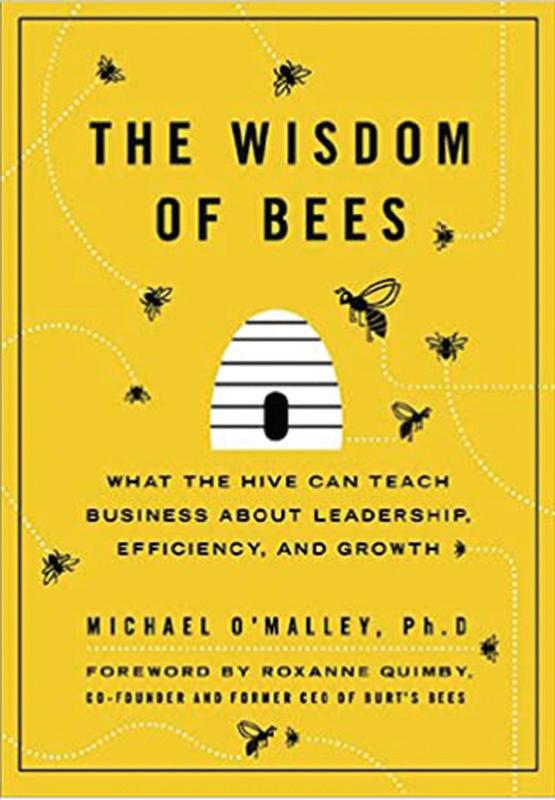
1 minute read
Do you have any special talents? Banjo playing? Stick Whittling? I once benched 420lbs
WHAT THE HIVE CAN TEACH BUSINESSES ABOUT LEADERSHIP, EFFICIENCY, & GROWTH

Advertisement
Lesson #7 - Order and Innovate Through Fuzzy Constants THE WISDOM OF BEES by: Michael O’Malley, Ph.D.
Meaningful progress and creativity requires fixed points of reference and allowance for “optimal error.”
Organizational constants come in the form of standards, conventions, procedures, and efficiency. They provide a fixed forum for the exchange of ideas and essential points of reference. Without a firm foundation, employees don’t know where to step next. Their mental maps of the work environment are studded with an unknown number of land mines.
Constants keep the bees from literally losing their way. An organization’s ethical foundations keep companies together when things are most likely to fall apart and the tugs of temptation and desperation are greatest. What allows successful leaders to hold fast when stresses exert pressure to let go? How do leaders know what critical moves to make when circumstances are most dire? The existence of standards and practices. Adherence to organizational constants comes naturally in the hive but requires habit formation in our institutions. As President Kennedy once remarked, “The time to repair the roof is when the sun is shining.”
Fuzzy constants provide a company with the means to order the workplace, and to fence in permissible behaviors, without forcing out spontaneity, creativity, and individual judgment. Moreover, fuzzy constants are not “messy.” “Messy” is an index of poor planning and a lack of constants. Although companies exist within wildly competitive and unpredictable markets, the best ones are not messy at all. Their physical environments are neat, their operating protocols, forms, and scripts are consistent, and their value systems are entrenched. They know who they are, what they are doing, and where they are headed.
Constants do not drive out originality; they make it possible.













